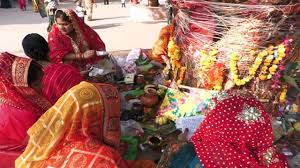Married women in Odisha observe Sabitri Puja for well-being of husbands

In Odisha, Sabitri Puja holds a special place in the hearts of married women. This festival celebrates a wife’s love and devotion to her husband. Each year, women observe this ritual with faith, praying for their husbands’ long life, health, and prosperity.
The Powerful Legend of Savitri and Satyavan
The festival’s roots lie in a powerful story from the Mahabharata. Savitri, a wise and devoted princess, married Satyavan, a prince destined to die within a year. On the day Satyavan was to die, Yama, the god of death, came to take his soul.
However, Savitri did not give up. She followed Yama and engaged him in conversation. Impressed by her dedication and cleverness, Yama agreed to return her husband’s life. This story shows how a wife’s love and courage can overcome even death itself.
Why Sabitri Puja Matters in Odisha
For women in Odisha, Sabitri Puja symbolizes marital fidelity and strength. They believe that by performing this ritual, they protect their husbands and bless their marriage. The festival also emphasizes the values of patience, loyalty, and courage within family life.
Moreover, the puja strengthens family bonds and cultural traditions. It reminds women of their important role in nurturing relationships and preserving faith.
Rituals and Traditions of Sabitri Puja
Sabitri Puja takes place on the Amavasya (new moon day) of the Jyeshtha month, usually in May or June. Women follow a set of meaningful rituals that honor Goddess Savitri.
Fasting and Preparation
Women fast throughout the day, often avoiding food and water. This fast reflects their dedication to the puja and their husbands’ well-being. They wear bright sarees, typically red or yellow, which represent prosperity and happiness. Many also decorate their hands with mehndi designs and adorn their hair with flowers.
Setting Up the Puja
The puja requires simple items: turmeric, kumkum (vermilion), betel leaves, flowers, fruits, and especially banyan tree leaves. The banyan tree symbolizes longevity and strength, aligning with the wish for a long life for husbands.
Women often perform the puja near a banyan tree or a special place inside the home. They place an idol or image of Goddess Savitri to focus their prayers.
Chanting and Storytelling
During the puja, women chant mantras and recite the story of Savitri and Satyavan. This sharing of the legend reinforces the festival’s meaning and inspires devotion. They offer water, flowers, and food to the banyan tree, showing respect and seeking blessings.
Offering Prayers and Breaking the Fast
After the rituals, women offer sweets and fruits to the goddess and distribute prasad (blessed food) to family and neighbors. They break their fast only after completing the puja, usually at sunset. Finally, they pray for their husbands’ health and happiness, lighting lamps to invite divine protection.
Modern Celebrations and Community Spirit
Although traditions remain strong, Sabitri Puja now also serves as a social event. Women gather to celebrate, share stories, and support each other. This communal aspect keeps the festival lively and relevant in today’s world.
Schools and cultural groups in Odisha also organize programs to educate younger generations about Sabitri Puja. Thus, the tradition continues to thrive beyond the household.
Additionally, Odia communities outside Odisha observe the puja with enthusiasm, preserving their heritage.
Symbolism and Life Lessons from Sabitri Puja
Sabitri Puja teaches valuable lessons about love, dedication, and resilience. The banyan tree, a key symbol, represents endurance and a long life—qualities important in marriage.
Furthermore, the fast and prayers highlight discipline and devotion. Women embrace their spiritual strength and reinforce their commitment to family.
This festival honors the power of loyalty and respect, which help build strong, lasting relationships.
Conclusion
Sabitri Puja is a beautiful expression of a wife’s love and faith. In Odisha, it remains a vital celebration of marriage and family values. Through rituals, stories, and prayers, women renew their vows and seek blessings for their husbands.
Beyond the ceremony, Sabitri Puja reminds us of the strength found in devotion and the importance of preserving traditions. It inspires married women to honor their roles with courage, patience, and love.






